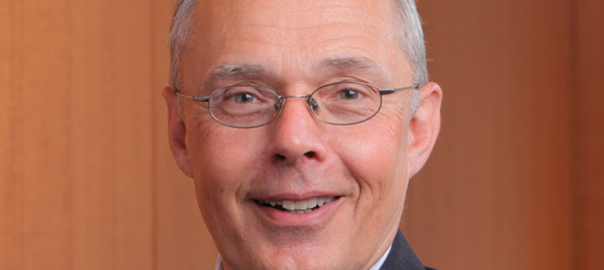
CHARTING THE MAYORAL MAZE
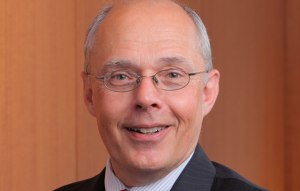
This year’s mayoral race for the Democratic primary, appears to be a maze with no clear path to the finish line. Every time one seems to glimpse that path to victory for one or another of the candidates, a new dead end pops up. Meanwhile, someone will win this primary. Let’s try to use this piece as a tool to chart this maze. Let me be clear, I do not know who will win this mayoral primary, even as I believe that the ultimate winner will be the candidate who can carry the diverse communities that make up what the leadership organizations in those communities call the Hispanic vote. Let’s examine the five fundamental elements at work in this primary.
One, this is a large field with at least 8 serious candidates. This field is talented but each of these candidates is politically challenged. I have therefore come to think of this as the Achilles primary: where each serious candidate has an exposed heel, which if struck with the right arrow or series of arrows will lead to defeat. We have two Little Engines that Could in Brooklyn Borough President Eric Adams and Comptroller Scott Stringer. Both bring long experience as elected officials from Albany and City Hall, with track records of accomplishment as well as scar tissue and each have roughly $10 million in campaign reserves tapered to the city’s campaign finance system.
We have four boom or bust candidates: Andrew Yang, Maya Wiley, Ray McGuire and Diane Morales. None of the four have any experience as elected officials, but each has a compelling story to present to voters. McGuire is well funded, Yang and Wiley reasonably well-funded, while Morales brings energy on the left but is underfunded in relative terms. I do not expect all four of these candidates to either rise or fall, but an honest appraisal would neither coronate nor dismiss any of these four candidates. The unpredictability of who will rise (and how far) and who will fall (and how far) or fail to rise, among this quartet of boom or bust candidates, is a major impediment to predicting the outcome of this race with any confidence. Finally, we have two policy technocrats with real managerial experience and well-earned respect from those who know government, in Katherine Garcia and Shaun Donovan, but no track record and little name recognition.
As an aside, both Donovan and Garcia, remind me of Ed Costikyan from the 1977 mayoral campaign. Costikyan ran for Mayor and early on he had the most detailed plan for how to confront the fiscal crisis then plaguing the city. But Costikyan had little name recognition and muted bully pulpit skills. David Garth, who was running Koch’s campaign, recognized the value of Costikyan’s policy platform and orchestrated Costikyan dropping out to endorse Koch. Koch’s clear messaging skills anchored in Costikyan’s policy gravitas, was a clear boost to Koch’s successful campaign, especially with the editorial boards of the Post and Daily News which proved so critical to Koch’s success. I would argue that if one of the leading candidates were able to pull off with Garcia and/or Donovan what the Koch campaign did with Costikyan, that might help to pave their road to victory. For example, Donovan could help anchor the governmental inexperience of Yang or McGuire or help to broaden the appeal of Adams. Similarly, with an endorsement anchored in adopting her platform, Garcia could underscore the experience of Stringer or deepen the policy profile of Wiley. Which is not to say that a Garcia could not help a Yang as well as an Adams or that a Donovan could not help Wiley. But instead of playing the role of Kingmaker or Queenmaker, perhaps ending up as the First Deputy Mayor for the candidate they endorse, Garcia and Donovan appear likely to play out their candidate’s string in the city’s first use of the Ranked Choice Voting (RCV) system in city-wide primary, without any significant impact on the mayoralty to come.
Two, which brings us to the RCV system. There is no template here in NYC for this system. Consequently, this first time use of RCV in a mayoral primary just adds to the uncertainty of projecting the outcome. Among the questions we don’t know the answers to, are how many voters will only vote for one or two candidates rather than taking full advantage of the RCV system to rank up to 5 choices in a large field like this one? Will those locking into voting for a single candidate (contemplated by the advocates of RCV in the literature when this was enacted by referendum back in 2019) be 5%, 15% or higher of the total vote? And will those single candidate voters be more pronounced among older and minority voters? No one knows the answers to those questions. But single candidate voters will have less influence on the outcome than those voters fully utilizing their RCV options.
My hunch on RCV voting is that the ranked choice mechanism is for the voters, not for endorsers. So, if editorial boards, candidates and other elected officials get into ranking their endorsements, they may find they are actually diluting the impact of those endorsements. In addition, I do not think any of the candidates for Mayor, Comptroller, Borough President or the City Council have the clout with voters to move large numbers of voters to follow their advice on the second, third, fourth and fifth place voting in the races they are competing in. But to be clear, none of us now know which RCV tactics will resonate with voters.
Three, this campaign has seemed to produce a flavor of the month among the candidates. Actually, two of the candidates have enjoyed 6-8 weeks of favorable coverage. Yang dominated from January through to the middle of February and still benefits from that surge. Then Adams drove the coverage from late February through early April, enhancing his position in this race. The candidate who catches fire in mid to late May leading into the June 22nd primary will have significant advantage. But like the nursery rhyme which admonishes that April showers make for May flowers, the candidate who productively plants and nurtures seeds in late April and early May will likely have the best political bouquet to present to voters in late June.
In addition, there is an inextricable link between several of the candidates. If Stringer were to rise that is likely to come out of Yang’s hide. Whereas if Morales had a spurt, broadening her reach among both Hispanic and progressive voters, that would likely blunt the prospects of Stringer and Wiley. Clearly, if McGuire and/or Wiley rose among Black voters that would undercut Adams’ seemingly strong hold on those Black voters and second place, with a chance to move into the lead. If, however, Donovan surged due to early TV ads that resonate with voters that could blunt McGuire’s potential to form a bi-racial coalition. The permutations abound on such tradeoffs among candidates’ fortunes involving late momentum swings, which render solid handicapping today on the ultimate outcome all but useless.
Four, the relative paucity of public polling around this race compared to near monthly polling from the Marist, Quinnipiac and Siena polling outfits in past mayoral campaigns, is a factor. But it goes deeper than the quantity of the public polling. I would argue that there is no public polling today capable of offering anything other than a Van Gogh like impressionistic portrait of the primary electorate. A precise Rembrandt portrait is simply out of the question short of a 1500 sample survey in mid- May. When the front runner, who is clearly Andrew Yang, according to these public polls, comes in at no higher than a quarter of the electorate when nearly half of the electorate has yet to make up its mind, all this polling is quite interesting, but not dispositive.
Meanwhile, the lack of clarity in the public polling we have so far seen reported in the media, goes much deeper. Given the sharply different patterns and levels of support the candidates are getting in these polls based upon race, religion, gender, ethnicity, ideology and education levels, to name just a few, means that a poll is only as good as the accuracy of its sample. And how can a 600 or even 800 voter sample accurately measure a race involving an energized Asian community, with an exciting Asian candidate like Yang, when these polls don’t have enough Asian respondents in their samples to even track Asian voters? Not to mention that few of the released public polls have subsets large enough to measure the full diversity of the Hispanic vote. So, forgive me, if I take the public polling data we have seen so far, not with a grain of salt but with a full container of Morton’s to be thrown over our collective shoulders.
Five, so instead of counting on pollsters with relatively small and potentially inaccurate samples to guide our assessment of this race, let’s look at how the electorate is likely to break down. In projecting this breakdown, I am factoring in guesstimates based upon turnout patterns from past primaries when similar candidates were on the field (e.g., in terms of gender, race, ethnicity and religion). I admit that this is a guesstimate, not science, but this is precisely the kind of analysis I have used in the past to improve upon the apparent projections from the public polls. Here is how I handicap the relative shares from key subsets of the electorate in this mayoral primary electorate (these are not TO percentages, but the share of the total vote cast in this primary by key voting blocs).
- Black voters: 26-28 percent.
- Hispanic voters: 19-23 percent.
- New Class voters: 18-22 percent.
- Outer Borough Jewish voters: 14-17percent.
- White Catholic voters: 8-10 percent.
- Asian voters: 6-10 percent.
When in-depth polling asks New York City Democrats to self -describe themselves ideologically and we match those answers up to the exit polls and the returns of previous primaries here is how it comes out: 27-29 percent of NYC Democrats are pure progressives (about 20 percent say progressive and 7-8 percent identify themselves as Democratic Socialist), 31-34 percent call themselves traditional liberals, 24-27 percent call themselves moderate and about 10-12 percent say they are conservative Democrats. But in Democratic primaries progressives tend to vote in higher numbers so their share trends toward a third, while conservative Democrats often avoid primaries so they tend to drop to just under a 10 percent share of the primary vote. But the new conventional wisdom is wrong, progressives are not ascendant in Democratic primaries here in New York or around the nation, even as they are ascending. In recent primaries traditional liberals have voted more in line with moderate Democrats than progressive Democrats.
In reality, there is still an iron triangle that dominates Democratic primaries: at its base are minority voters and along one side are outer borough Jewish and White Catholic voters and the other side are highly educated women voters. Consequently, to win Democratic primaries, candidates have to crack into the majority of primary voters who lie within that iron triangle. DeBlasio won in the last open mayoral race in 2013, because he got half of black and just about 40 percent of Hispanics, while sweeping progressive voters. Whereas Zephyr Teachout, Bernie Sanders and Cynthia Nixon lost their statewide primaries here by large margins, including within NYC, in 2014, 2016, 2018 and 2020, because they failed to make a dent among minority or white ethnic voters. Not to mention that the higher the overall turnout, the lower the pure progressive share is of the total vote, precisely because Black and Hispanic voters as well as white ethnics whose voting surges in high turnout elections, are more moderate ideologically than the young hipsters in the gentrified sections of Gotham (the western neighborhoods of Queens and Brooklyn). In the last few days we have seen multiple media stories about how leading progressives want to block Yang, who they consider too moderate. Progressive voters can play a critical role in taking Yang down, but their prospects for success require uniting behind one candidate, they simply do not have the electoral heft to splinter their third of the primary vote and prevail.
A few additional things worth noting. Overall women will be clear majority of this primary casting between 58-62 percent of the vote. Thus New York city primaries are driven by a mutually reinforcing minority majority that is decidedly feminine. Traditionally voters over 45 in age cast between 62-65% of the total Democratic primary vote compared to only a 35-38 percent share for those under 45 in age with those 18-29 in age lagging. But in last year’s presidential primary here in New York, the share of the vote cast by those under 45 in age surged to over a 40 percent share. Will that growth trend for younger voters hold this year? That would be huge factor favoring Yang. The Asian vote is usually in the 6-7 percent range as a share of the total city vote, but in the low turnout 2009 primary, where John Liu proved to be a ceiling busting candidate running for Comptroller, the Asian vote surged to a 10 percent share. My sense is that given Yang’s appeal and the tragic racist violence plaguing Asian Americans, including here in New York, that Asian share will grow to at least 8 percent, but a double digit share for the Asian American vote, is not out of the question even in a larger overall turnout (850,000 votes or higher city-wide).
New Class voters are a diverse amalgam of highly educated often affluent, professional voters who live a largely secular lifestyle. They are mostly, but not exclusively White. These voters dominate in Manhattan and the gentrified neighborhoods of Brooklyn and Queens. They include young voters, older reformers, and middle-aged voters. Many were raised in the Jewish or white Catholic faiths, but now live secular lifestyles often marrying or cohabiting outside their faith and racial and ethnic groups and they vote quite differently from their parents and grandparents in primary contests. New Class voters include the LGBTQ voters. New Class voters work in the private sector, but also in prestigious not for profit jobs. On federal issues these voters are very liberal particularly on social issues, but they can be eclectic on state and local issues. Most of these voters are either progressive or traditionally liberal. The ranks of New Class voters have doubled in its share of the total primary electorate, over the last two decades.
In recent years, as the conventional wisdom has mistakenly grown that the only way to win city-wide Democratic primaries( as opposed to select legislative districts where the demographics has shifted towards those younger vibrant largely female candidates who are progressives) is to shift sharply left, candidates have been giving short shrift to outer borough Jewish and White Catholic voters and their share of primary electorate which had been melting has fallen even further than demographics and aging out has taken its electoral strength. Nevertheless, if energized by the threat of Covid and concerns about rising crime and/or the city’s economy, that White ethnic bloc can still cross a quarter of the total vote (down from a 60 percent share in the 1970’s), becoming a significant factor in determining the outcome.
The Hispanic share is the trickiest to predict. By dint of demographic growth and registration heft, the Hispanic share could easily grow back to the 27 percent share that the Ferrer candidacy brought it to in his narrow run-off defeat to Mark Green after finishing first in the 2001 mayoral primary. Meanwhile, the incredible diversity within the Hispanic communities (by nations of origin, range of ideology, degree of religion, self-identification on race and age as well as gender and socio-economic status) has led to lower rates of voting among Hispanics relative to other groups. In fact, only two Hispanic candidates have established the ability to mobilize the Hispanic vote across all these diverse subsets: Herman Badillo and Freddy Ferrer. If Diane Morales can replicate that feat she will beat expectations, but one has to wonder if she can do running so completely to the left on ideology, given that so many Hispanics do not lean left (those who are Pentecostal and more recent immigrants from nation’s where they fled left wing regimes). Finally, in the absence of a leading Hispanic candidate for Mayor, Hispanic voters tend to decide late, but when they do decide they tend to shift sharply toward one candidate (i.e., toward Koch in 1977; away from Koch to Cuomo in 1982, back to Koch in 1985, towards DeBlasio in 2013). Given the large number of vibrant Hispanic candidates in the Bronx and Brooklyn Borough President races and the large number of Hispanic candidates in the City Council races (with so many open seats) I suspect that the Hispanic share will cross the 20 percent threshold in this race and that if it breaks late towards any one candidate with their first and second place votes, that candidate will have the upper hand.
For example, for well over a decade on the issue of crime, polling data has consistently found that Hispanic voters fall midway between Black and White voters on the best approach to fighting crime. When the issue is polled in the wake of tragedies like the Diallo and Garner, Hispanic voters lean towards the concerns of Black voters. Yet, when the perception is that NYC is suffering from a crime wave, in the absence of race based violence, then Hispanic voters lean toward the reflex of supporting proactive community policing. Alternatively, Asian voters going back to the Korean store boycotts of the Dinkins era tend to align with White voters on how best to police New York. In practical terms this could put Hispanic voters in the mode of reacting to the events and the perceptions flowing this June. To conclude, I do not know who will get the Democratic nomination in this mayoral primary, but I do believe to my core, that whoever carries the Hispanic vote will ultimately win this primary. Furthermore, I do not think any candidate has a hold much less a lock on where the lion’s share of the Hispanic vote will land this June.
Which brings us to assessing the candidates themselves. To reiterate, my take is that there are 8 talented, but politically challenged candidates leading this race. Let me delineate what each candidate needs to do to win and implicitly what blocks their path to victory. My goal here is to be realistic and neither harsh, nor pollyannish in these assessments.
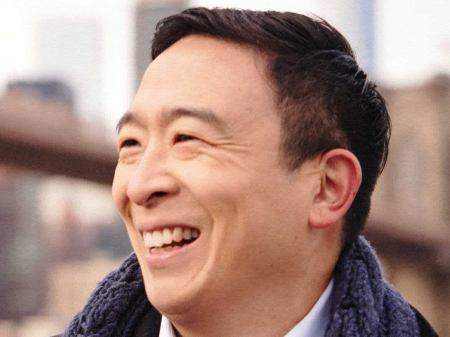
Andrew Yang: is the clear front runner. But he has established that lead in the early polling around the periphery of the iron triangle which has controlled past Democratic primaries. His base appears to be younger voters, Asian voters, orthodox and Hasidic Jewish voters. The early polling also shows Yang with support from a narrow but not insignificant number of Hispanic and Black voters. But challenges loom. Yang is known according to the polls by about 8 out of 10 voters but has never crossed getting the support in one in four of those polled. For Yang to win he has to dramatically change the share of the vote cast by younger and Asian voters so that their aggregate share of the total vote crosses 45 percent of the total vote. The progressives seem to be gunning for him and key interest groups along the barricades of the abortion and immigrant economy are suspicious. The question becomes can Yang not just hold his current support, but break into the iron triangle while going through the issue gauntlet awaiting him from opposing campaigns and their IE’s as well as with the editorial boards? I neither dismiss Yang but do not think he has yet established a sure path to victory. He sorts of reminds me of a cross between Andrew Weiner’s early rise in 2013, before the second of his three sex scandals led to an implosion of his mayoral candidacy and Howard Dean’s “scream” ending of his promising 2004 presidential candidacy. I do not expect Yang to implode the way Weiner and Dean did, but I could see him deflating as late May turns into June. To be in a position to win this primary Yang needs to carry Hispanic and older non-orthodox Jewish voters, while holding on to younger progressive voters who like his positive generational vibe but may not like his moderate policy instincts. The Yang coalition is akin to widely separated bowling pins. To convert the spare leading to victory, Yang needs to throw a bowling ball that knocks downs pins on opposite ends of the political alley. It can be done, especially if the perception of his winning takes hold, leading to rumors becoming fact when it comes to a well- funded IE coming to Yang’s defense. But Yang does not have either an easy or an automatic lane to victory.
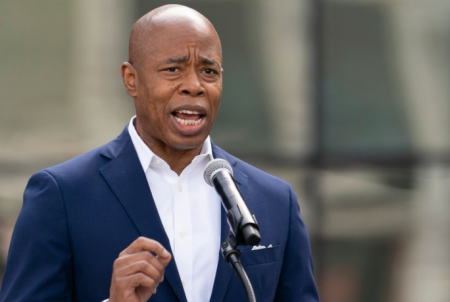
Eric Adams: has been the Little Engine that Could. Adams has run a disciplined campaign and has clearly established himself as a serious contender. He appears to be the leading Black candidate and has made inroads into both Queens’ Black neighborhoods and among Hispanic electeds. As I write this Adams just picked a meaningful endorsement from Freddy Ferrer. Moreover, Adams has an impressive war chest and has benefited from being DeBlasio’s not so secret choice as shown by Adams snagging the labor endorsements of the three major unions DeBlasio invited to Gracie Mansion for that pow wow a month or two back to block McGuire and Yang. But Adams is vulnerable to late spike in support for McGuire and Wiley among Black voters. That vulnerability is enhanced by the fact that Adams has had to run a de facto run-off approach in an RCV system, precisely because he has had to defend himself among Black voters from the determined thrusts of Wiley and McGuire. Funny thing is I would favor Adams against Yang if the run-off system were still in place for Democratic primaries. All this has left Adams unable so far to expand his reach to outer borough Jewish and white Catholic voters despite his blunt prediction last year that he would “Out White” Scott Stringer in the outer boroughs. I would be surprised if Adams finished lower than second in this primary and shocked if he came in lower than third, but I am not sure that he can win this primary unless and until he connects with Hispanic voters and outer borough white ethnics on crime, while holding his Black base, because while he has not alienated White progressives, nor has he bonded with them. Adams would greatly benefit if neither Stringer nor Wiley rise and progressives and traditional liberals wind up voting for Adams to block Yang. I am not yet convinced that Adams holds the winning ticket on this race track, but I do think he has so far run a most disciplined race.
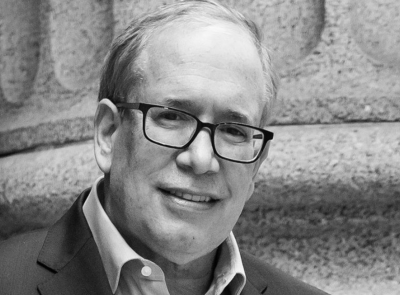
Scott Stringer: appears until the last week or so to be the Little Engine that Couldn’t, as he had apparently misplayed his positioning according to the polls, by becoming a candidate without a base. Stringer’s strength should have been his ability to become the candidate of outer borough Jewish and White Catholic voters, who had a simultaneous appeal to progressive voters, White, Black and Hispanic, especially in Manhattan. But from 2018 through last year Stringer veered so far left that he no longer could lay claim to his presumed outer borough strength in the polls. Moreover, Stringer seemed to presume that his lead opponent would be Ruben Diaz Jr, so he spent more time the last few years cultivating Black and Asian support that gravitated to Adams and Yang. But no one has yet filled the vacuum among either Hispanic or white ethnic voters. I also suspect that the early polling data may be underestimating Stringer, while it is overestimating Yang’s strength due to sampling errors. Thus, Stringer has the resources to recreate his base, but he has left himself almost no margin for error in the last 10 weeks of this race. To win Stringer needs to beat back Morales and Wiley among both progressives and across the board among Hispanics, while connecting with older White Catholic and non-orthodox and Hasidic Jewish voters and by becoming the second choice among Asian voters. Thus, Stringer could still be the prime beneficiary of the RCV system. If Stringer rises Yang is likely to fall, if alternatively, Yang continues to rise, Stringer is not likely to win. While Stringer’s electoral prospects are uncertain, the presumption of those who are banking on Stringer not being elected Mayor remains premature. Like Bob Abrams in that 1992 Senate primary, Stringer could come out of a crowded field with early advantages apparently lost becoming reclaimed.

Maya Wiley: has yet to catch fire, but her potential remains real. If Wiley can light a simultaneous fire among Black, Hispanic and White progressive women that is magnified by key newspaper endorsements (especially the New York Times) Wiley will become a factor in this race. Right now, I suspect that if the polls are correct that she is doing better among highly educated White progressive women than minority women. But Wiley has lit enough sparks among minority women, as reflected in her congressional endorsements form Nydia Velasquez and Yvette Clarke and the 1199 endorsement, to rebut any conclusion that those sparks can’t become a flame. One talisman for that success could be if she grabs hold of an issue or an event that brings her coalition together. Time is running short, but there is still time for an issue based event to capture the imagination of the female majority. If Wiley rises sharply among Black women she could fatally hurt Adams and McGuire. If Wiley rises among White progressives and/or Hispanics she will block Stringer. If Wiley rises among both groups simultaneously, she can put electoral lightning in a bottle, although she might still lack the resources to bring home a victory, though her diverse appeal could make the RCV system her ally. I could see her becoming akin to the early Herman Badillo’s mayoral runs. But I am not quite sure if will merely beat expectations a la Badillo circa 1965 or whether she becomes a full- fledged contender as Badillo did in 1973. Wiley’s skills as a gifted and personable communicator and debater make her the functional equivalent of a late speed horse in a crowded Triple Crown race. Of all the boom or bust candidates, Wiley has the highest ceiling and the lowest floor.
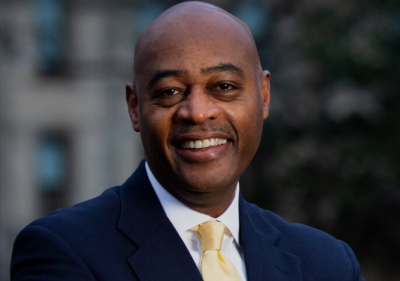
Ray McGuire: I do not dismiss McGuire as playing a significant role in this primary, even as I do not see him as being favored to win. He has assembled a competent and experienced campaign team. He has raised a lot of money with the potential for support from well- funded IE’s. I suspect McGuire’s large early TV ad buy has taken his support from the 2-4 percent range to being on the cusp of hitting 8-10 percent. The question is can he double that to hit 17-20 percent as May turns into June, becoming a serious contender? If he can do that provided Wiley does not become the candidate of minority women, McGuire could eclipse Adams as the leading Black candidate. Then the question would be would he have the message backed by the resources to connect with outer borough White ethnics? My sense, however, is that McGuire won’t be able to simultaneously pass Wiley, Stringer and Adams to in effect square off against Yang. My further sense from the whispers of those pushing rumors emanating from private polling data, is that Democratic primary voters want experience tied to innovative ideas, rather than handing City Hall over to a business man. For McGuire to emerge as a serious prospect for victory in this primary, he would have to have shot into the lead ahead of both Adams and Yang, while getting the editorial endorsement of several not just one of the leading papers and last of all connecting with Hispanic voters. But I do not doubt for a second that McGuire could crest at a respectable 15 percent or so of the primary vote. Under that scenario, where McGuire’s first place voters went for their second and third place choices could loom large for determining the ultimate winner of this primary.
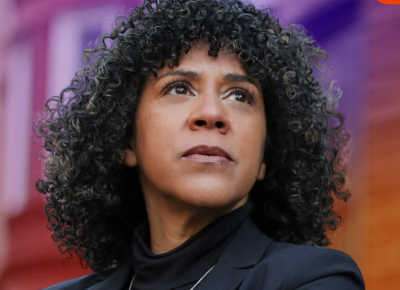
Diane Morales: has brought energy, messaging skill and passion to this campaign. But her path to victory needed to be paved by her dominating the diverse fifth of the electorate that is Hispanic, as the one true Latina in this race and then consolidating the progressive wing behind her. Instead, Morales chose ideology over practicality, choosing to run as a pure progressive rather than as the leader of the Hispanic community (which cuts across ideological divides) and one must respect her commitment to her ideology. If I am wrong and she can unite the fifth or the electorate that is Hispanic, with the third that is progressive, then she can pull off an AOC vintage upset. But Morales has stiff competition for the progressive lane (e.g., Stringer and Wiley) and candidates with greater resources and endorsements to go after the Hispanic vote (Stringer, Adams, Wiley, McGuire and perhaps Yang). To be a factor she needs to hit double digits by mid -May. If Stringer starts moving up once his ad buys start digging in, progressives may see Stringer rather than Morales as the best way to block Yang form winning. If progressives lock in to trying to defeat Yang, that could be a bad omen for Morales. For old time historians of NYC mayoral campaigns, Morales sort of reminds me Paul O’Dwyer’s race for mayor in the 1965 primary. Like O’Dwyer, Morales may win warm support and true affection from her die hard supporters, but too few votes to vault into the top tier.

7 and 8. Shaun Donovan and Kathryn Garcia: as noted above, I do not think, either one has a chance to win this primary. But I do think either could play a key role not just by endorsing another candidate, but by handing over their platform to that candidate as Costikyan did for Koch in 1977. Donovan is not likely to play that role, as his father has contributed $2 million to an IE to project TV ads on his son’s behalf. That spending, given Donovan’s impressive record of public service and innovative ideas, could get him above 5 percent, perhaps even up to approaching 10 percent. If Garcia, thinks long and hard on the race seeing this race as it is, rather than how she wished it would be, she could claim a Kingmaker’s (or Queenmaker’s) role for herself. Both of the key editorial boards in this contest (the New York Times and the Daily News, because their views resonate with key voting blocs in the Democrats’ primary electorate) have foreshadowed in writing that they really respect Garcia’s ideas and experience. If Garcia seizes that moment, she can have a real impact on the outcome on this race. At first blush, that might lead Garcia to lean towards to help Yang, but if Yang does prove to be akin to Howard Dean and Yang’s candidacy cracks under an assault from the left and labor, then Garcia might try to gauge whether it is Stringer, Adams or Wiley who is at once more interested and open to advancing both her program and her career.
Where is the race likely to head from here? First, there are two institutional endorsements that loom large. Who will the UFT endorse? They are the last of the major vote pulling unions left to endorse. Does the UFT in effect join the WFP in endorsing Stringer to pull together a progressive and labor fortified take down of Yang’s candidacy? Does any of the TV and digital ad buys put forth a message that resonates with voters the way David Garth’s ads did for Koch or the Dante ad did for DeBlasio? Or will all these ads just cancel each other out? Who do the Times and Daily News endorse for Mayor and will they endorse a single candidate or taper their support to the RCV system? And will they endorse early enough to establish or more likely accelerate momentum behind the candidate of their choosing? If the Times and the Daily News endorsed the same candidate that could have an impact greater than the mere sum of its parts.
Finally, what do events have in store for these candidates down the stretch? Will Covid look conquered here in NYC or will the variants push a fourth wave? That could impact not just mood but turnout. Second, what impact will crime and justice have on this race? Will there be a crime surge that becomes tabloid fodder? Or does the city appear to be settling in for a quiet summer? Or heaven forfend is there a racially charged hate crime(s) that capture the public imagination (the way the Yusef Hawkins case did in 1989 which helped elect Dinkins Mayor)? Third, does the denouement of the Attorney General’s or the Eastern District investigations of the Governor, come out in mid-June, knocking the mayoral race effectively off the front pages down the stretch the way national politics and these allegations in Albany have kept the mayoral race from being center stage until about a week ago? In short, this mayoral race could have a very short run on the political equivalent of Broadway, which could skew turnout downward.
Let me end as I began. I do not know who will win this primary. Hopefully this piece has at least focused our attention on what factors will drive the outcome. I for one will be keeping my eye on when and by what margin, the fifth of the vote that will be cast by Hispanic voters, decides who it will support for Mayor. Until then, this primary contest to quote Churchill will remain “a riddle wrapped in a mystery inside an enigma.”
Bruce N. Gyory is a Democratic strategist and an adjunct professor of political science at the University at Albany, SUNY.
